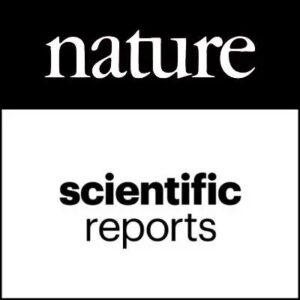Publications

Effects of maturation on myotonometric parameters and their predictors of athletic performance in elite youth soccer players
Authors: Alberto Garcia-Santamaria 1, Cristian Abelairas-Gomez 2, Samuel Carrera 1, Alexis Padron-Cabo 1, Ezequiel Rey 1
Affiliations:
- Faculty of Education and Sport Sciences, University of Vigo, Pontevedra, Spain
- Faculty of Education Sciences, Universidade de Santiago de Compostela, Santiago de Compostela, Spain
Journal: Nature - Scientific Reports - May 2024, Volume 14, Article no. 12287 (DOI: 10.1038/s41598-024-63224-3)
-
Field & Applications:
- Sport
- Muscle development / Performance
- This study design provides valuable insights into variations in muscle stiffness and its associations with performance in youth soccer players, including the innovative approach of investigating the contractile properties of lower limb muscles in youth soccer players at different stages of maturation using MyotonPRO, a reliable and user-friendly tool for assessing muscle mechanical properties.
The aim of the present study was to investigate the variations in individual muscle stiffness across different maturation stages (i.e., peak height velocity [PHV]) in elite youth soccer players and to explore the associations between lower limb muscle stiffness and performance in sprinting (10, 20, and 40 m sprint), maneuverability (9–3-6–3-9 m sprint test), and jumping (countermovement jump [CMJ]).
A total of 131 elite youth soccer players aged 12–18 years, volunteered to participate in the study and were divided into pre-PHV (n = 21), mid-PHV (n = 33), and post-PHV (n = 80). Muscle stiffness of the rectus femoris (RF) and biceps femoris (BF) muscles was assessed using a MyotonPRO.
Results showed that players in the pre-PHV stage had lower stiffness in the BF and RF muscles compared to mid-PHV (p < 0.001; effect size [ES] = moderate to large) and post-PHV players (p < 0.001; ES = moderate to large). It was also observed that the mid-PHV group had lower stiffness levels in their RF muscle compared to the post-PHV group (p < 0.001; ES = small). Significant correlations were found between BF and RF stiffness and sprint (p < 0.001) and maneuverability (p < 0.001) performance. RF stiffness showed a significant positive correlation with CMJ (p < 0.05), suggesting that greater lower body stiffness is beneficial for athletic performance in youth soccer players.
The findings highlighting the importance of considering training methods that increase muscular stiffness, particularly in relation to the RF muscle, to optimize athletic performance.
Keywords: muscle, musculoskeletal system, physiology, sensors and probes, skeletal muscle
The study on variations in individual muscular stiffness across different developmental stages in soccer players aged 12 to 18 years revealed significant differences in muscle stiffness levels between pre-PHV, mid-PHV, and post-PHV players. The study also identified significant positive correlations between RF stiffness and CMJ performance, as well as between BF and RF stiffness and sprinting and maneuverability performance. This suggests that practitioners, including trainers and coaches, should prioritize techniques to improve muscle stiffness, particularly in relation to the RF muscle.


